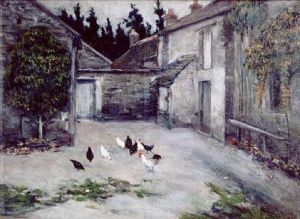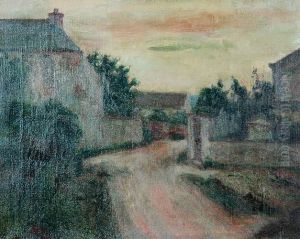Leon Hirszenberg Paintings
Leon Hirszenberg was a Jewish-Polish painter born in 1870 in the town of Łódź, which was then part of the Russian Empire and is now in Poland. His work is often associated with the symbolism and realism movements, and his themes frequently delved into Jewish life and traditions, as well as the broader human condition. Hirszenberg's paintings are characterized by a sensitive portrayal of his subjects, often reflecting the struggles and spiritual depths of the Jewish people in Eastern Europe during his lifetime.
Trained at the Academy of Fine Arts in Kraków, Hirszenberg was a student under the guidance of famed Polish artists Jan Matejko and Leon Wyczółkowski. His education provided him with a strong foundation in the academic style, but his work eventually evolved to include more expressive and symbolic elements. Hirszenberg's deep connection to his Jewish heritage and the plight of his people during a time of social and political upheaval deeply influenced his art.
In the late 19th and early 20th centuries, Hirszenberg lived and worked in various European cities, including Munich, Paris, and Jerusalem. His travels and the changing cultural landscapes he encountered further shaped his artistic vision. He created works that ranged from genre scenes to historical and biblical subjects, often imbued with a sense of melancholy and introspection. His painting 'The Wandering Jew,' created in 1899, is one of his most well-known works and exemplifies his symbolic approach to Jewish themes.
Leon Hirszenberg's life was cut short when he died in 1908, at the age of 38. Despite his untimely death, his contributions to the world of art during a pivotal time in European history have been recognized posthumously. His works are held in various collections and continue to be studied for their cultural and historical significance, as well as their artistic merit. Hirszenberg's legacy lives on through the poignant images he created, which capture the essence of a people and an era marked by both suffering and resilience.



